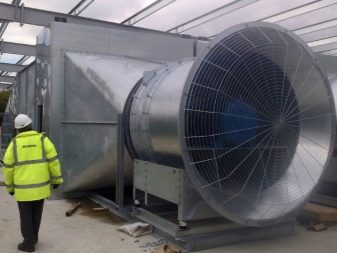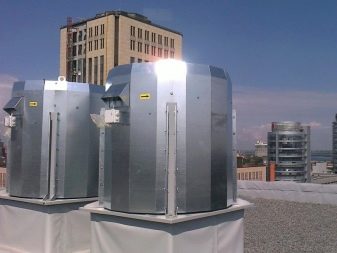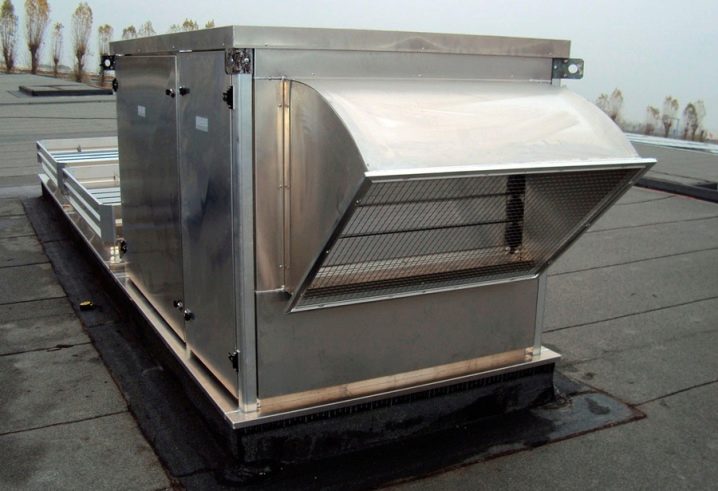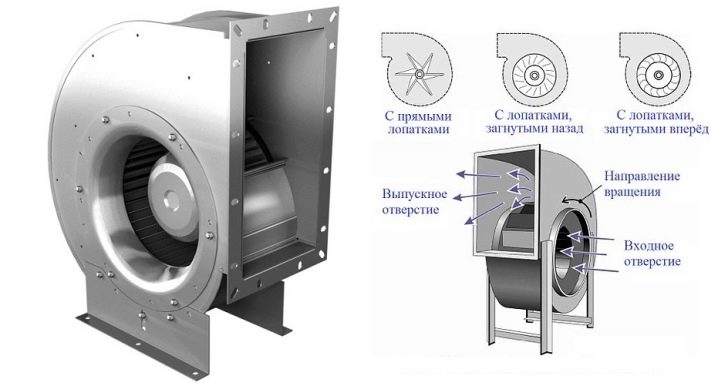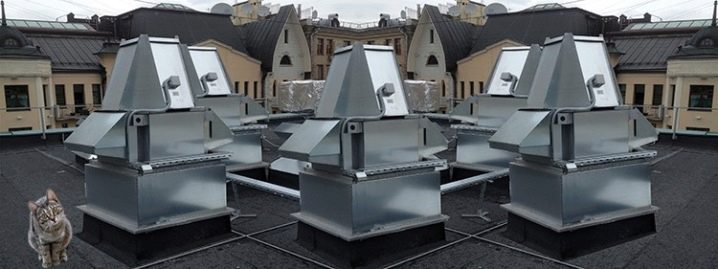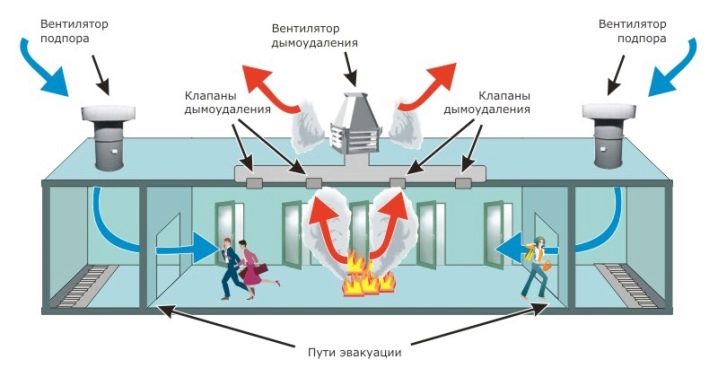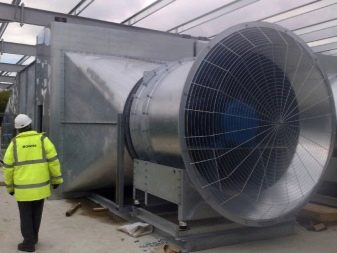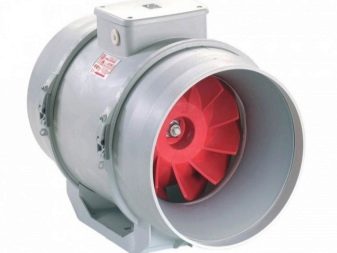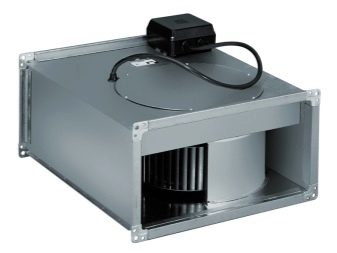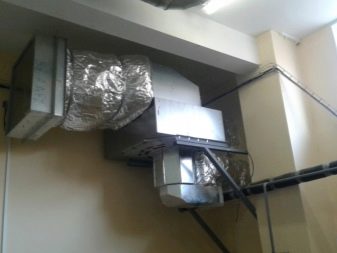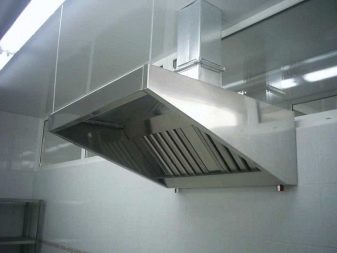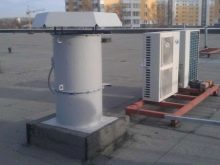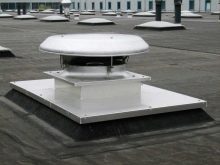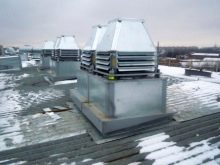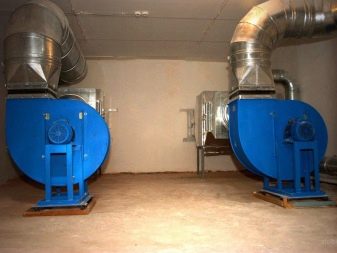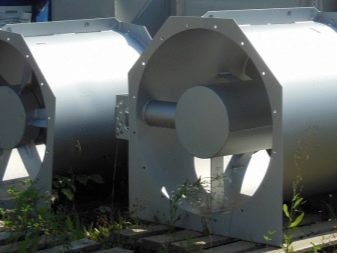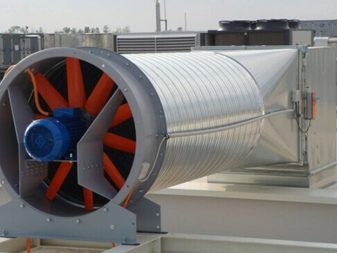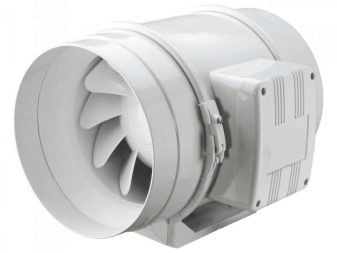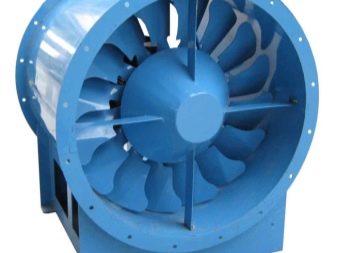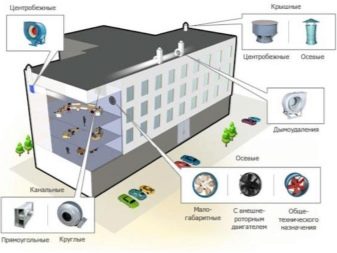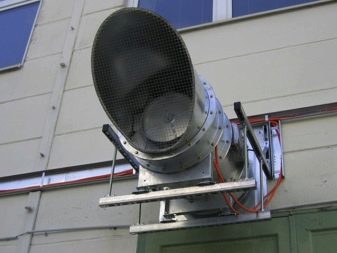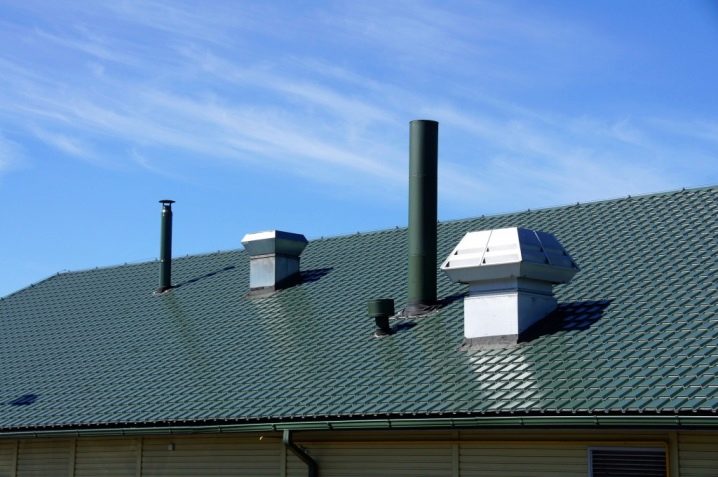Fans of smoke removal: how to choose and install?
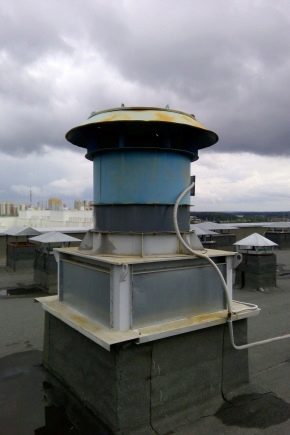
Smoke fans are an important element of smoke protection systems and are widely used in the construction of ventilation systems of residential buildings and industrial buildings.
Purpose and scope
The role of smoke protection in the ventilation of various objects is difficult to overestimate. In the event of a source of ignition, there is a sharp release of gas-smoke mixture, which represents a serious threat to human life. In order to remove the products of combustion from the premises as quickly as possible, powerful installations with the function of forced smoke evacuation are required. Such effective devices are smoke removal fans, which in a short period of time can replace the volume of smoke that is in the room with clean air.
The relevance of the use of smoke removal fans in recent years has increased rapidly. This is due to the use of modern building and finishing materials, many of which, when burned, release deadly toxins to humans. Devices are one of the key links of the fire protection system and since their appearance have saved a large number of human lives.
Installation of smoke removal fans is necessary in high, windows that do not have windows, in buildings subjected to significant wind load, as well as in underground tunnels, basements and semi-basements. Fans are mandatory for installation in emergency ventilation systems with artificial activation, located in high-rise buildings, book storages, archives, libraries and fuel warehouses. The only restriction on the use of smoke-removing devices is the presence of inclusions in the pumped air, such as sticky dust, explosives, aggressive vapors and large fractional particles with a concentration of more than 100 mg / m3.
Device and principle of operation
Fans of smoke removal consist of an electric motor, filters and an impeller with bladed nozzles.Devices are part of the ventilation system and work in conjunction with air ducts, temperature sensors and valves. The requirements for such installations are quite high. Devices must withstand temperatures up to 600 degrees and always be in good condition. To do this, emergency ventilation systems are regularly inspected by specialists and pass working tests.
With timely maintenance and proper use, the lifespan of the smoke-removing fans can last for decades. Sometimes models are mounted in a common ventilation system, and in the absence of abnormal situations they are operated as conventional air conditioners. However, in this case, it should be borne in mind that when a fire occurs, the instruments will no longer work as effectively as their emergency counterparts. This is due to the fact that the design of models does not imply their continuous use.
The devices were specially developed for short but intensive work in critical situations. Therefore, many devices are able to turn on only when a fire occurs, and at other times are inactive.
The principle of operation of smoke removal devices is to create a discharged zone, followed by the intake of smoke and carbon monoxide into it. At the same time, the backwater line provides a flow of clean air, thereby ensuring a complete replacement of the air volume. Flue systems are connected to air ducts by means of flange connections, however, instead of flanges, the use of flexible metal inserts is allowed. Emergency ventilation is started after smoke detectors installed in the room give a signal to turn on. For more effective operation of the system requires the installation of at least four detectors.
When installing the fans, it should be remembered that the simultaneous activation of any automated fire extinguishing system and smoke remover is unacceptable.
Advantages and disadvantages
The use of smoke removal fans has both strengths and weaknesses. The advantages of operating such models include a number of factors.
- Fans provide a high survival rate of people and pets in the room during smoke.
- Instant triggering of sensors leads to automatic switching on of devices. This allows you to begin the process of removing smoke from the first seconds of a fire.
- The ability to connect equipment to a backup power source allows you to run the system even in a power outage.
- A large model range of fans greatly facilitates the selection and allows you to purchase a device of any kind and power.
The disadvantages of using smoke-removing models include complex installation, which requires special knowledge and certain experience, as well as the need to regularly check the system for operation.
Species
Fans of smoke removal are classified according to a number of signs, the determining of which is the type of construction. According to this criterion, devices are divided into channel, wall and roof models.
- Duct devices They are distinguished by their small size, high performance and low noise level. The channel fan consists of an impeller located on the same shaft with the engine, vibration pads and a housing. Models are designed for installation on ventilation systems of any type, therefore, they are available with both round and square sections.In addition, channel devices are able to work not only on the output, but also on the air supply. The cost of models varies from 12 to 138 thousand rubles.
- Wall fans consist of an electric motor, a heat-insulated casing, a frame with an impeller and a pipe connecting the device with the air duct. Fans of this type can be connected to several ducts at once, which makes them most popular when installed on ventilation systems that have an extensive network. The work of wall models is recognized as the most effective among analogues. This is due to the wall location of the device and the possibility of instant removal of polluted air due to the shorter duct. You can purchase a wall model for 38-170 thousand rubles.
- Roof fans installed on the roofs and are highly efficient work on large areas. The devices are controlled with a shield located in a special cabinet located in the room. Until recently, the model was considered the most effective, however, with the advent of wall-mounted appliances, faded into the background.According to the method of capturing and transmitting air flow roof devices are divided into radial, axial and diagonal.
- Radial (centrifugal) fans include a spiral casing, a wheel with blades, an engine and a housing equipped with inlet and outlet openings. Models are able to work with air polluted with solid particles, the main thing is that their concentration in it does not exceed 100 mg / m3. The devices do not have high temperature stability and are designed to interact with air flow, the temperature of which does not exceed 80 degrees. In addition, due to the characteristics of the structure of the blades, the models produce a lot of noise, which is why they are used only in industrial facilities. The price range of radial models is quite wide. The simplest and low-power device can be purchased for only 7 thousand rubles, while high-performance industrial models cost from 100 thousand rubles.
- Axial fans much stronger radial and able to work at a temperature of 400 degrees for at least two hours. When the smoke temperature rises to 600 degrees, the device can work for about an hour, which will take people out of the room and take measures to extinguish the fire.The devices are highly resistant to chemical compounds and can be installed at the enterprises of the chemical and pharmaceutical industries. The models are equipped with three-phase asynchronous motors and are capable of pumping up to 120 thousand cubic meters of smoke per hour. The cost of devices varies from 3 to 158 thousand rubles.
- Diagonal fans they are a more advanced modification of axial instruments and are distinguished by a diagonal outlet of intake air, while for axial instruments it moves along an axis. Devices have a rather low noise level and high performance.
Tips for choosing
When selecting a smoke exhaust fan, it is necessary to be guided by the number of floors of the building, its functional purpose, layout, and expected heat load. So for single-story buildings, axial models are well suited, capable of diverting large volumes of smoke with low aerodynamic resistance of the network. Despite the fact that the maximum working pressure of such models does not exceed 1 kPa, the instruments have a rather high efficiency. For high-rise buildings, it is recommended to purchase radial models.
The devices are capable of operating at high aerodynamic drag, easily withstand a pressure of 2.85 kPa.
Estimated heat load also significantly affects the choice of fan. So, in residential premises it can reach 300 degrees, which means the need to purchase a device designed for stable operation for an hour at 400 degrees. In public buildings with a variety of premises for different purposes, it is advisable to use fans that can withstand temperatures of 400 degrees for two hours. Warehouses fuel and car garages need to purchase models that can withstand up to 600 degrees for an hour.
Installation
Channel models are installed in the duct rupture and their installation is not difficult. Installation of the roof fan is somewhat more complicated and occurs in several stages. In order to independently install the roof model, you must:
- to form a hole in the roof;
- install a check valve in the hole;
- equip the device with vibration-absorbing structure;
- install the tray and the fan itself;
- Treat all joints with fireproof sealant.
The life and health of people depends entirely on the proper installation of the smoke removal fan. Therefore, it is better to entrust the installation of fire safety systems to specialists.
On installation of the installation of smoke removal system D + H, see the following video.
